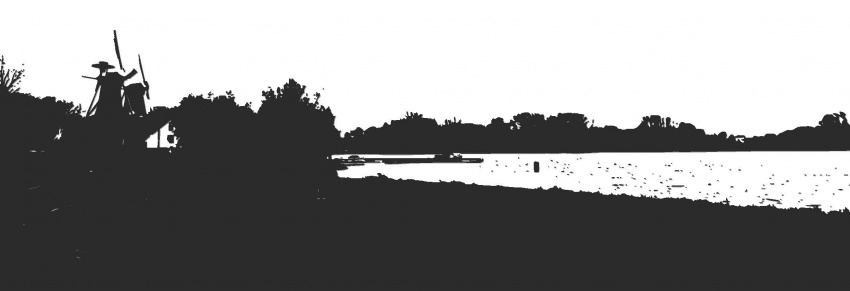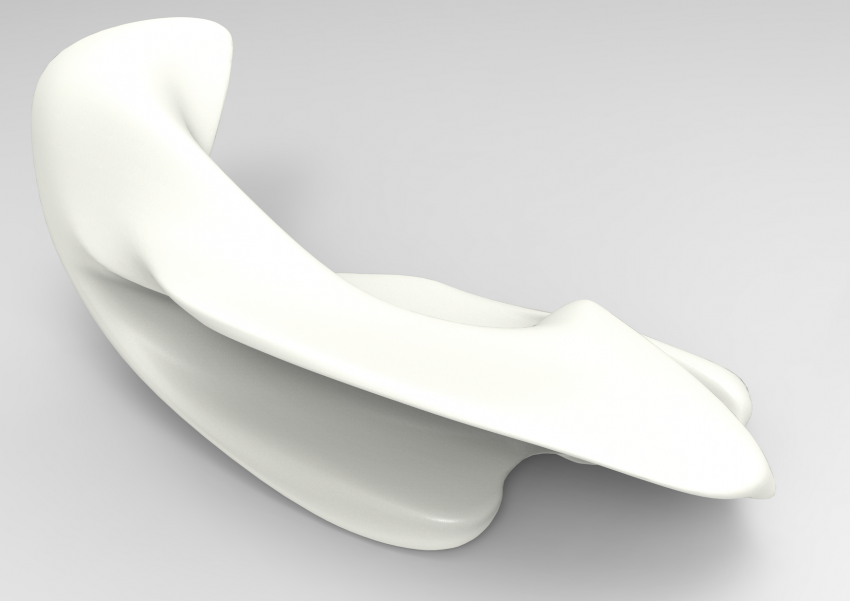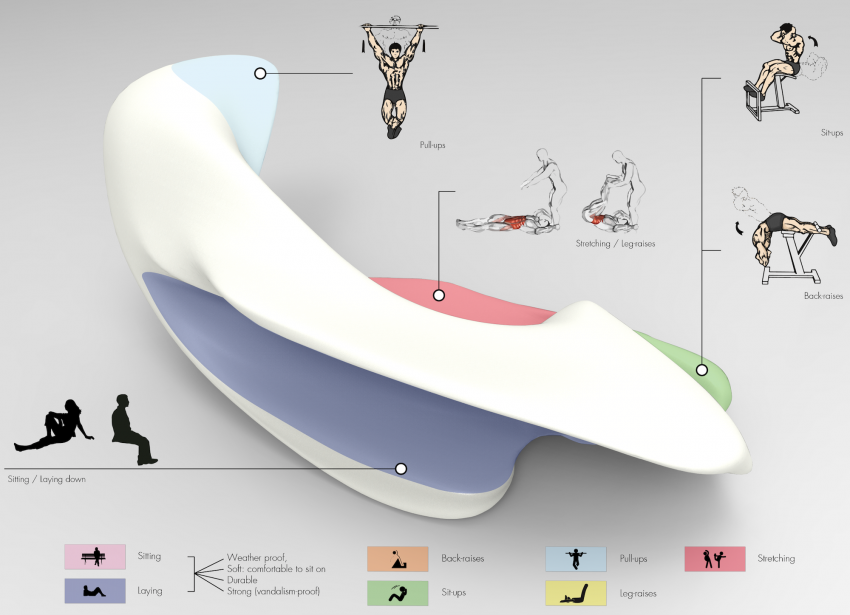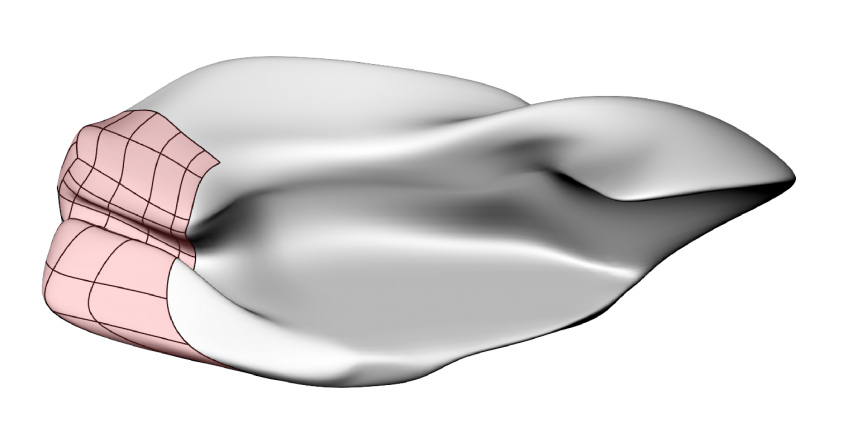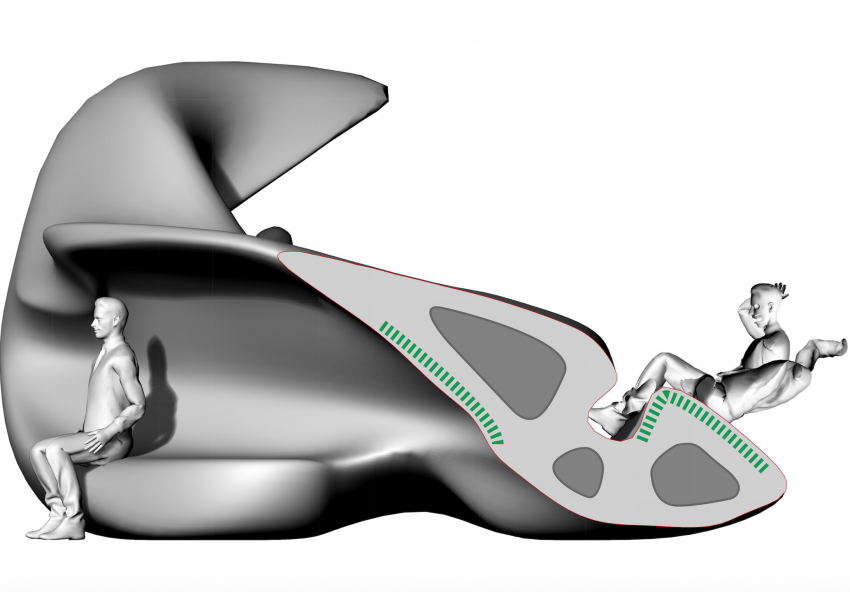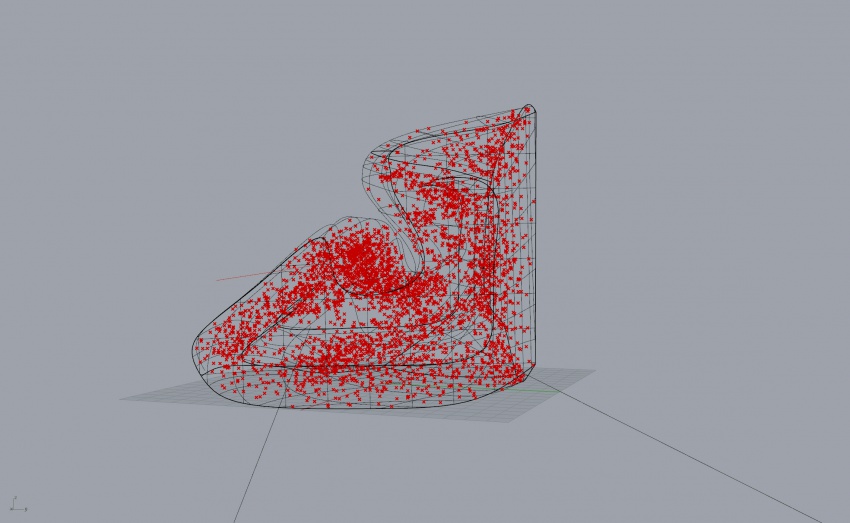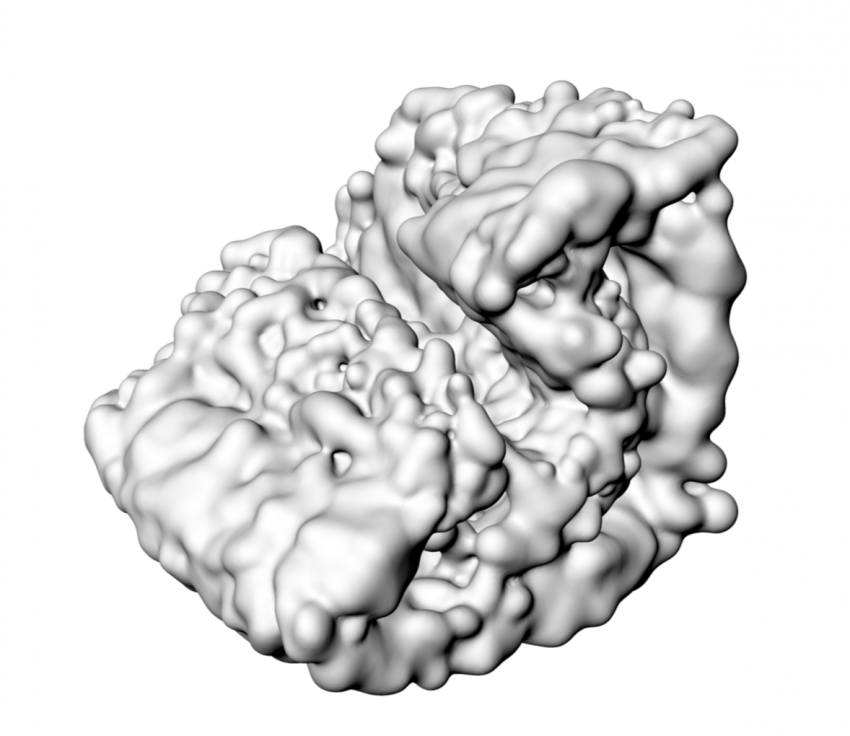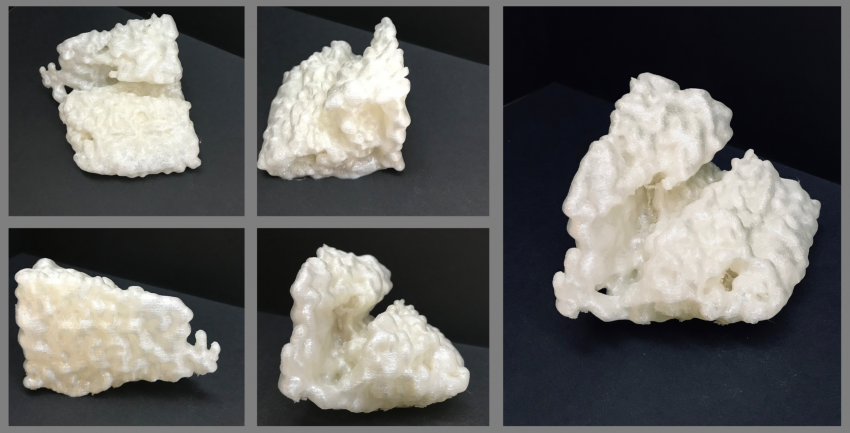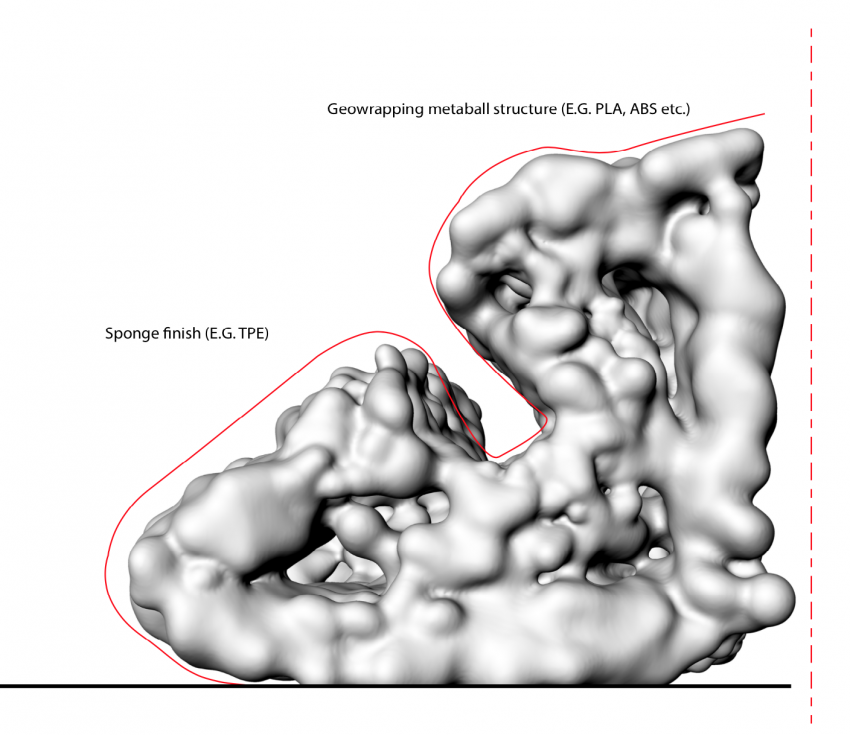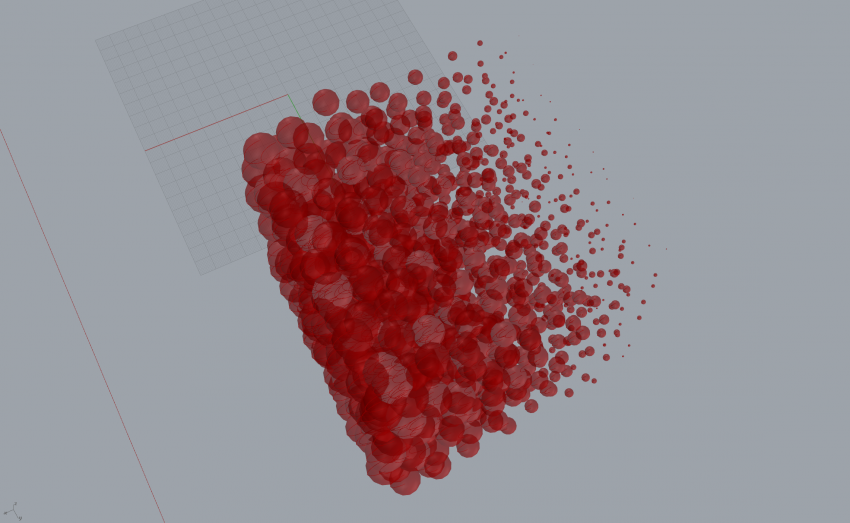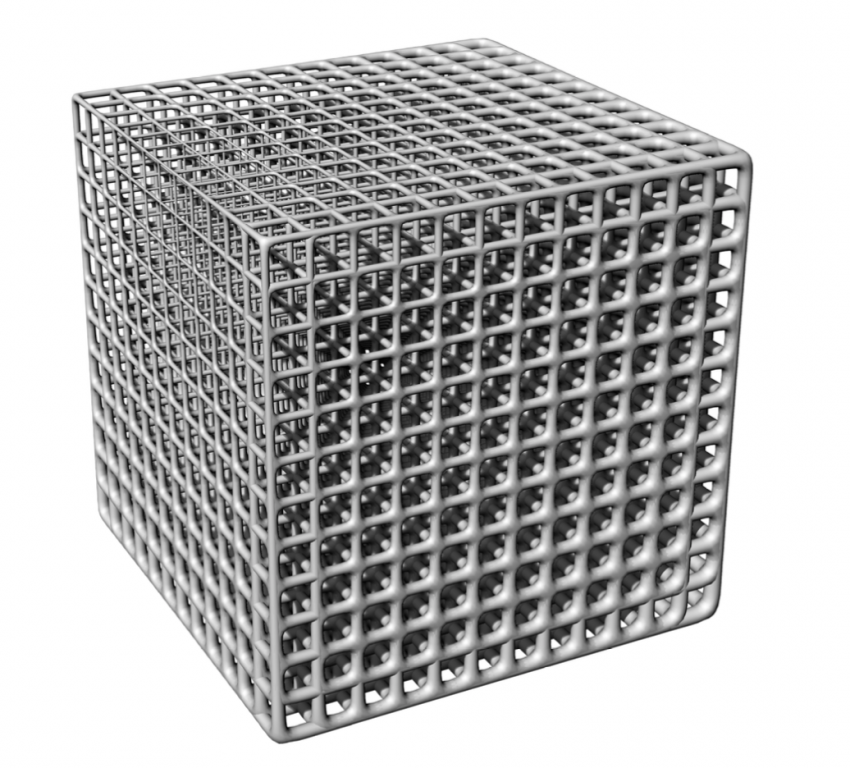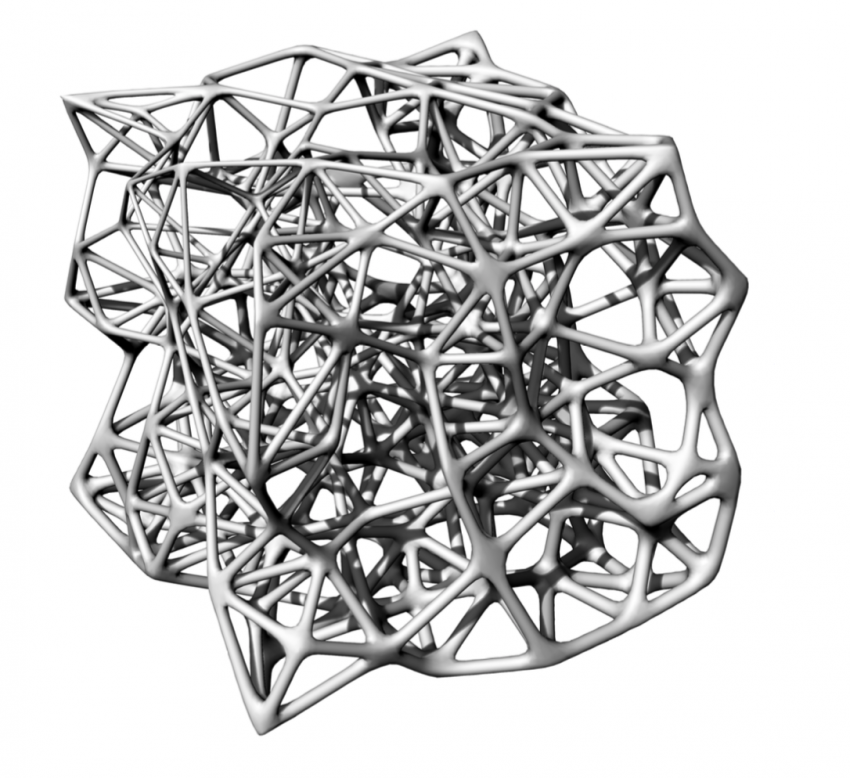project12:W3MSc1TUDG4
MSc1 TUD: G4
Bewar Ahmed - Nino Schoonen
Geowrapping variant as load-bearing structure:
(result of workshop, to be combined with other structures)
TPE Experiments:
Reflection
+ T-Splines to Grasshopper New insights developed in order to code what we want to achieve in Grasshopper Grasshopper skillset developed Understanding the process of making models 3D-Print-ready
- Presenting our results more clearly short on time/manpower Defining our end product but only dealt with structural demands is not the complete end result we wanted to achieve. Spent a lot of time getting coding to work in Grasshopper, at the cost of presentation
The goal of the second workshop was to create a structure that could make a transition between a loadbearing structure and a soft surface. Because our objective was quite clear, we immediately dived into Grasshopper to get this print-ready. During the Grasshopper coding process, we’ve learnt how to make a Geowrapping structure out of a point cloud. This function creates a sphere around a point. Dense point clouds would create many spheres and merge them together. The spheres have a smaller radius at dense areas, which would make them stronger. By making a scale model of this PLA-printed structure we could conclude that Geowrapping can be a very suitable pattern to use at places that have to deal with force or tension. Geowrapping creates a very strong structure, while not being too dense by its infill. Although the workshop made us find a new pattern that can solve structural stresses, a lot of optimization of our code is still required. Our next aim should be to combine this structural geowrapping method with a soft porous sponge material. Shortage of time and manpower made us no reach this objective. But it is still a very interesting objective to find a transition between a soft, porous surface that transits into a wireframe if it does not need to carry load, or thick mass as a structural element. At last, we also need to redefine our point cloud, which right now reacts to attractor/repellent curves. Right now this point cloud is based on a random infill, we also need to find a grid-system for this to gain a more optimized transition.
